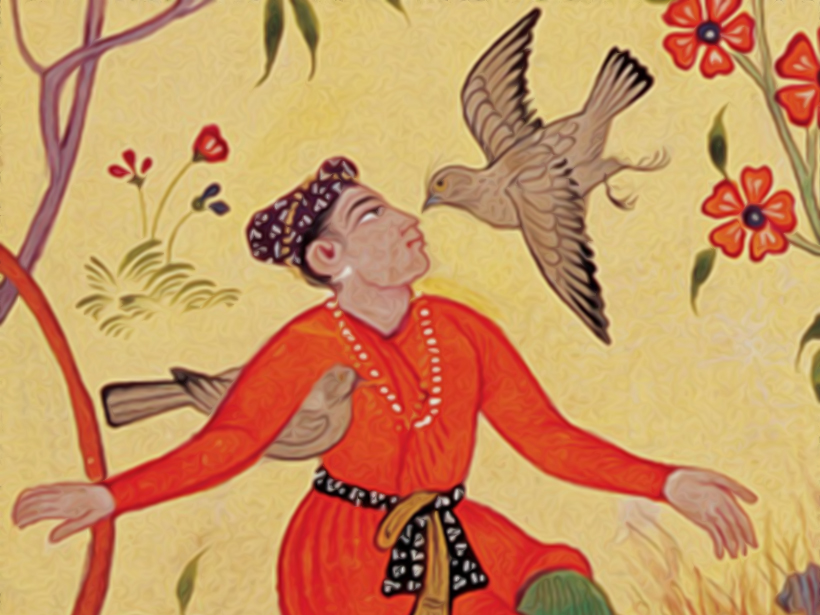Make History Fun Again: 5 eccentric hobbies of the Mughals

When they were not at war, the Mughal emperor and nobility enjoyed a large variety of hobbies. Here are some of the more unusual ones.
By Archana Garodia Gupta and Shruti Garodia
#5 Chess
While chess is not an eccentric hobby, the Mughals were quite eccentric about it! Chess was a universal obsession across the country—of kings, nobles and common people alike. In those days, it could be played either with two or four people.
Emperor Akbar played it lifesize in Fatehpur Sikri, where real people enacted the pieces. Sometimes, international matches were held and bets placed on them. One time, Emperor Jahangir’s courtier was pitted against the ambassador from the Persian court. The game raged for three days, but the Persian diplomat ultimately lost, and due to the terms of the bet, had to “bray like an ass” in the open court!
#4 Ishqbaazi
Many people, even the less wealthy, enjoyed ishqbaazi, the sport of displaying trained pigeons. A common Central Asian pastime, the first Mughal emperor Babur’s father had met his untimely death when his royal dovecote collapsed into a ravine. Mughal emperors kept up to 20,000 pigeons, which were trained to do all sorts of tricks mid-air.
High quality pigeons were called khassah (‘specials’), and a khas pigeon could perform 15 charkhs (wheels) and 70 bazis (somersaults) in a single session. Others, like carrier pigeons, were trained to carry communications.
It’s tough to believe, but official carrier pigeons were around in India until 2002, as the Police Pigeon Service (!) was used to deliver urgent messages to remote parts of Odisha.


#3 Delhi’s Dandies
By the later Mughal period, colourful characters called bankas became famous in the imperial capital of Delhi.
They liked to distinguish themselves with such eccentric fashion styles that they could be recognised from a great distance. One would shave off half his moustache, and grow the other half so long that he plaited it. Another would wear trousers with legs of extremely uneven length. Some went around carrying maces on their shoulders like Hanuman.
Bankas were known for their gallantry and extreme sense of honour, and as proof of a solemn pledge, would pluck a hair out of their moustaches and offer it to people like moneylenders!
They were also famous for their bravery and strength, and for being so highly trained in self-defence, that even when unarmed, could defeat an entire gang of thugs.
#2 Elephant Fights
People loved watching and betting on animal fights of all kinds – from buffaloes to rams, goats, roosters and even partridges. However, only the emperor was allowed to arrange elephant fights, which were extremely dangerous – for the elephants, their mahouts, and even the spectators.


One account describes, “A wall of earth is raised 3-4 feet wide and 5 to 6 feet high. The two ponderous beasts meet face to face, on opposite sides. The riders…urge the elephants on until the poor creatures approach the wall and are brought to the attack. The shock is tremendous…with dreadful wounds…at length the wall is thrown down, and the stronger elephant attacks his opponent, putting him to flight. He pursues and fastens upon him with such obstinacy that the animals can be separated only by means of charkhis (fireworks), which are made to explode between them…they are afraid of fire.
Riders are frequently trodden underfoot and killed on the spot. The unhappy men (mahouts) take formal leave of their wives and children as if condemned to death. It often happens that some of the spectators are knocked down and trampled upon, by the elephants or the crowd.”
Imagine, Emperor Akbar, as a young man, once whimsically became a mahout in one of these elephant fights. The enraged elephant ran away with him, thundering across the Bridge of Boats in Delhi, yet he amazingly lived to tell the tale.
#1 Keeping Pet Cheetahs and Lions
By far the most insane hobby of Mughal royals, though, was their habit of letting sort-of tame cheetahs and lions wander about freely at court!


Emperor Akbar loved capturing and taming cheetahs himself. He kept 1,000 tamed wild cheetahs to help him hunt antelopes and gazelles, of which 50 roamed his court. His favourite spotted beast, called Madan Kali, strode around grandly, wearing gold chains around his neck, a richly embroidered velvet throw across his back, golden zardozi blinkers, and a personal drummer to announce his presence.
His son went even further. An Englishman who visited during Jahangir‘s time, wrote about how 15 lions were “made tame and played with one another before the King, frisking between men’s legs, and no man hurt in a long time”!
(For many more unusual facts from India’s past, check out the newly released two-volume set, The History of India for Children Vol. 1 and Vol. 2, published by Hachette India, which is now available online and in bookstores.)
Source: Read Full Article




